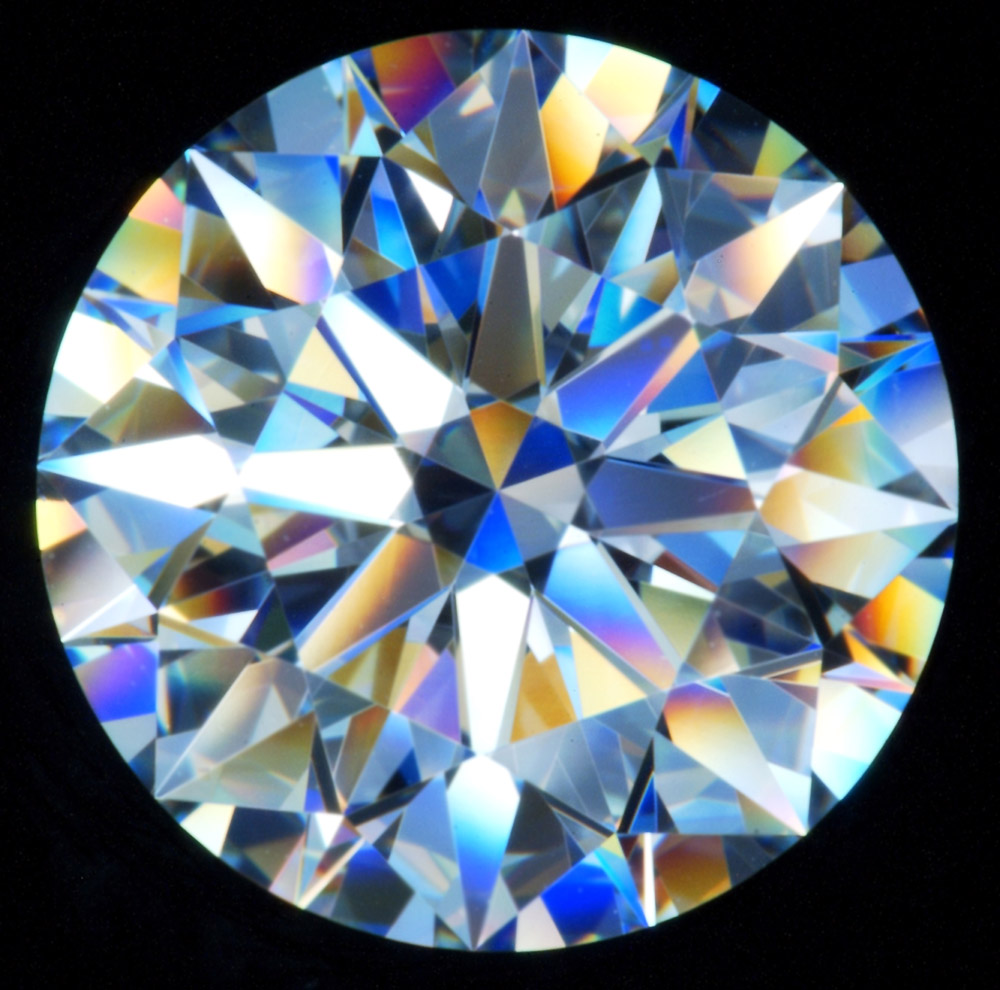American Gem Society's Ideal®
Light Performance with AGS Ideal® Report by GIA
Wade Abel, CG, Director of Gemology, American Gem Society

The 3D model is raytraced to assess the Light Performance of the diamond. Every facet’s orientation and slope can impact the Light Performance grade as determined through this process.
What is Light Performance?
Light Performance is assessed as the combined analysis of: Brightness, Fire, Contrast, and overall Light Performance. The diamond is scanned using a non-contact measurement device that uses light and shadows to build a virtual 3D model of the diamond with each facet represented with precise angles and in relation to the other facets. Once this is created, thousands of virtual light rays are sent through the model to predict and analyze how the light will appear to the observer. This process is called raytracing.
One important aspect of this analysis is accounting for the refractive index (RI) of diamond. With a high RI of 2.417, the rays of light are bent as they enter the diamond. With this change of angle for each ray, the possibility of total internal reflection increases, meaning that the facets will act more like mirrors than windows. The high RI can create active ray reflections, bouncing around the interior of the diamond before exiting to the eye. This is also what contributes to the sparkles and fire seen in diamonds.
When all the virtual rays of light from the Light Performance raytracing process are analyzed, very specific numerical values are produced, each representing a deduction value. This value represents how far the diamond’s performance is from the expected best performance. The deduction values from the analysis for each of the factors of Light Performance are combined to create the overall Light Performance grade. This grade corelates with the American Gem Society (AGS) Diamond Grading System 0-10 scale. To qualify for AGS Ideal®, the combined grade must be so low as to be rounded down to zero.
The AGS Ideal® Report by GIA
The AGS Ideal® Report is offered as a digital supplemental report that accompanies any GIA 4Cs report. The report is available for both round brilliant and some fancy shaped diamonds depending on the shape and facet arrangement. For round brilliant, the diamond must be graded as triple excellent with the GIA cut grade system and achieve an AGS Ideal® 0 for Light Performance. For fancy shaped diamonds, the polish and symmetry must be graded as excellent, and the diamond must achieve an AGS Ideal® 0 for Light Performance.
Diamond cut is fascinating! It is the reason for the sparkle that we all love. Increasing the sparkle, fire, and scintillation is what attracts us to diamonds. Having the ability to assess how light plays in a diamond helps us understand the possibilities of a diamond’s beauty.

The American Gem Society (AGS) Diamond Grading Standards have provided a common language for evaluating diamond quality among AGS members and diamond buying consumers. These standards were provisional when first published in 1966 and approved by the AGS members in 1975. To this day, AGS titleholders have the ability to assess diamonds with these standards. From 1996 through 2022, the AGS Laboratories applied the AGS Diamond Grading Standards in nearly all the reporting. In the early 2000s, the cut grade standard evolved, incorporating Light Performance, and creating a way to describe and predict how light acts in the diamond. This became a catalyst for manufacturers to focus on diamond cut and work toward the AGS Ideal®. Concerns arose with the closure of the lab that programs built around this cut grade would not have continued options for differentiation integral to their marketing. Luckily, with the strengthened collaboration between AGS and GIA, the AGS Ideal® continues to be available with the AGS Ideal® Report by GIA.


